-
Car Reviews
- All reviews
- Midsize SUVs
- Small cars
- Utes
- Small SUVs
- Large SUVs
- Large cars
- Sports SUVs
- Sports cars
- Vans
Latest reviews
- Car News
-
Car Comparisons
Latest comparisons
- Chasing Deals
All-new Navara morphs into a model-share with Mitsubishi, delivering unique styling details, an overhauled suspension tune and a Warrior flagship
Intimate model-sharing among workhorse utes has been an intrinsic part of the commercial-vehicle landscape for at least 50 years now – far more so than with regular passenger cars.
Most familiar to Aussies and Kiwis will be the Chevrolet– and Isuzu-badged versions of the 1972-80 Isuzu KB-series ute, which birthed the Holden Rodeo with its second generation in 1980, and continued as a GM-Isuzu model-sharing arrangement until the death of the Holden Colorado (and the Holden brand itself) four decades later.
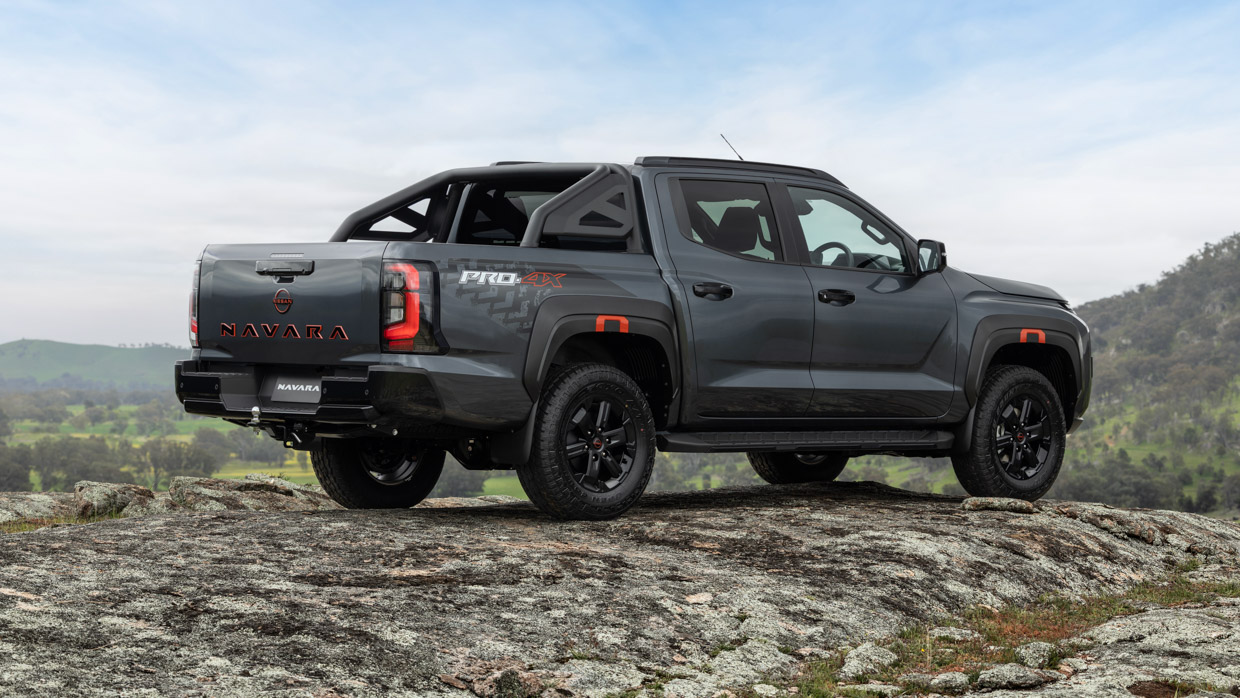
Then there’s the Ford Courier/Mazda B-series, Ford Ranger/Mazda BT-50, Ford Ranger/Volkswagen Amarok, Isuzu D-Max/Mazda BT-50, LDV Terron 9/MG U9 and now the Mitsubishi Triton/Nissan Navara. Don’t forget derivatives of D23 Navara, which spawned the Mercedes-Benz X-Class (after re-engineering), the Renault Alaskan and the Dongfeng Rich 6.
So model-sharing and joint-ventures among the ute fraternity is as common as a frosty on a Friday.
It’s perhaps a little perplexing, then, that some punters are up in arms about Nissan ceding its utility design authority – after a 90-year history (seriously!) – to simply rebadge and re-tune a Mitsubishi Triton.

Yet this was always the intention, seeing Mitsubishi is now part of the Renault-Nissan Alliance and was awarded the design lead for the next-generation ute, given its own experience in the same area.
Indeed, the only way the Navara ute was likely to survive into a fifth generation was to hitch its caboose to Triton, given the emergence of the Chinese-developed Nissan Frontier Pro PHEV ute (designed for export and appears destined for Australia at some point) and North America’s decision to go solo with the larger, V6 D41 Frontier ute in 2021.
The big thing clearly distinguishing the D27 Navara from the post-2023 MV Triton is styling details. The Nissan’s headlights, front grille and front bumper are unique, as well as the alloy-wheel designs, tail-lights, tailgate graphics and, on the Pro-4X, the wheelarch extensions and body decals.
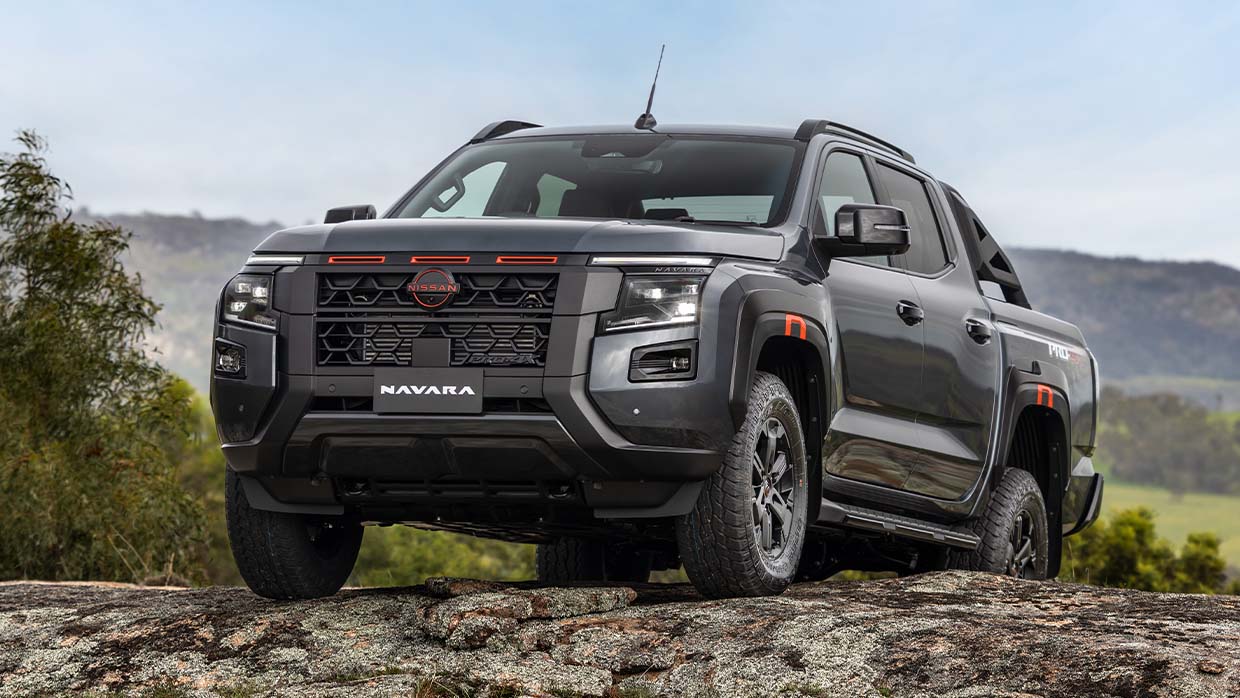
According to Ken Lee, senior design director at Nissan Global Design, the D27’s front-end was inspired by the prevalence of bull bars on local-market Navaras, as well as the muscular US-market Titan Warrior concept, to deliver a “tough, bold, strong” visage that incorporated three-slot air intakes from the 1986 D21 Navara for some heritage chic.
Inside, the differentiation is similarly minimal, yet quite effective. The Pro-4X cabin has gone in hard with piano-black garnishing and red detailing to suit its bolder image, while the ‘luxury-of-sorts’ ST-X gets tasteful two-tone grey upholstery with perforated centre sections (and NAVARA backrest lettering), plus stitched dash-facia padding and two-tone padded door sections.
There’s also a Nissan steering-wheel boss, but the rest appears to be pure Mitsubishi, including its excellent shift-on-the-fly ‘Super Select II’ 4WD system (which Nissan rebrands as ‘Super 4WD’).
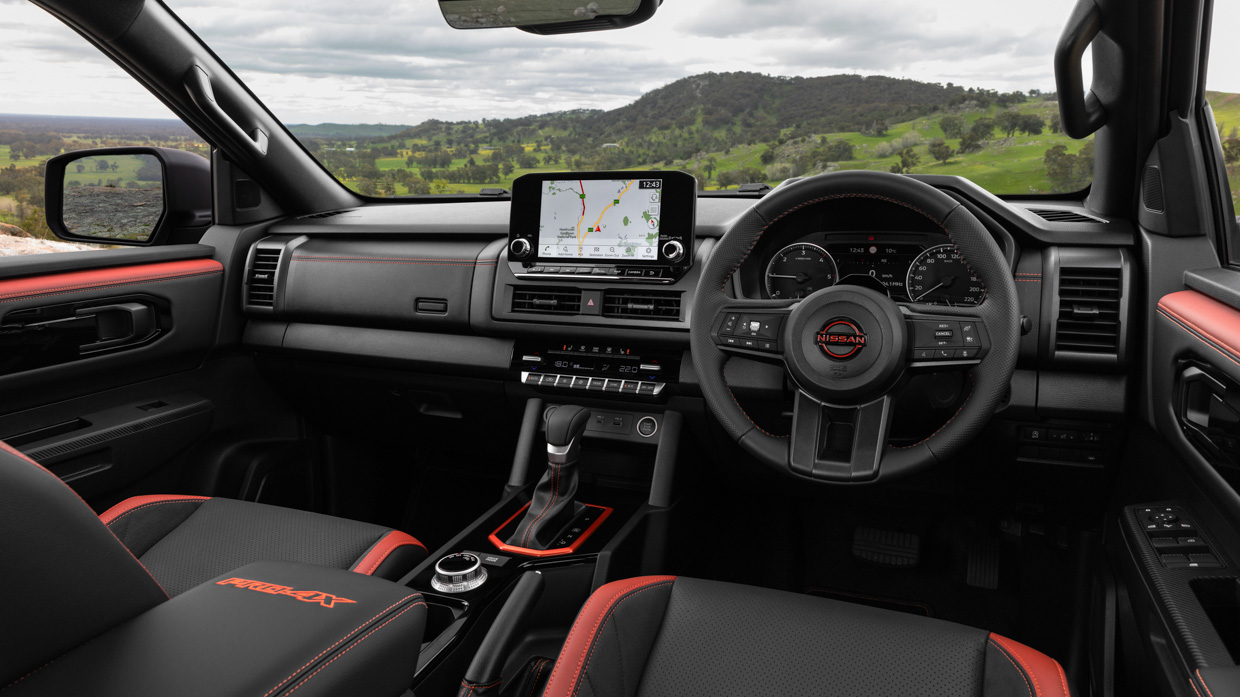
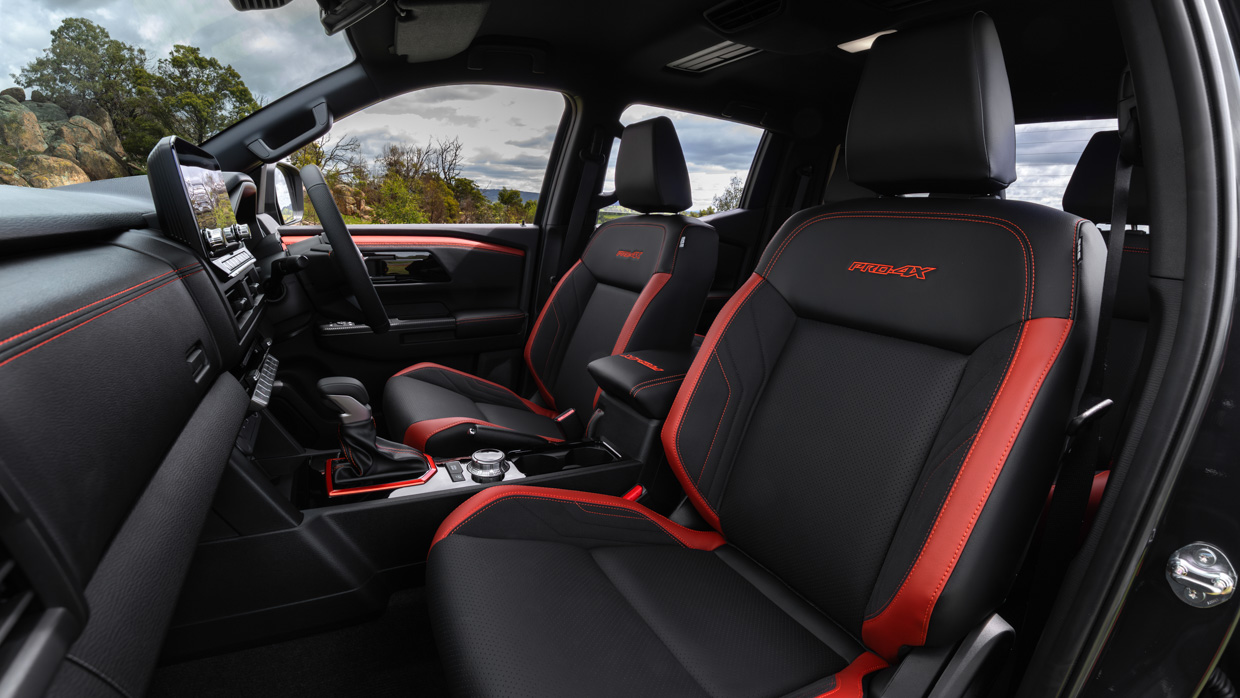
The Navara offers a terrific driving position (compared to the too-high previous generation’s driver’s seat) if also the bizarre and noisy air-blower unit in the ceiling – known as Princess Leia’s hairdryer – rather than having actual rear air-conditioning vents.
Nissan’s D27 Navara model range will be much simpler than before – concentrating on 4WD dual-cab automatics, and deleting all manuals, 4x2s, King Cab and cab-chassis variants. That’s what 90 percent of Aussies preferred, with the variant on test here – the ST-X 4WD dual-cab, expected to be priced around $60,000 list – being among the most popular.
The ST-X shares its 4WD system with centre and rear diff locks, and torsen rear limited-slip differential with the Pro-4X, and as such the forthcoming, Premcar-enhanced Pro-4X Warrior version.
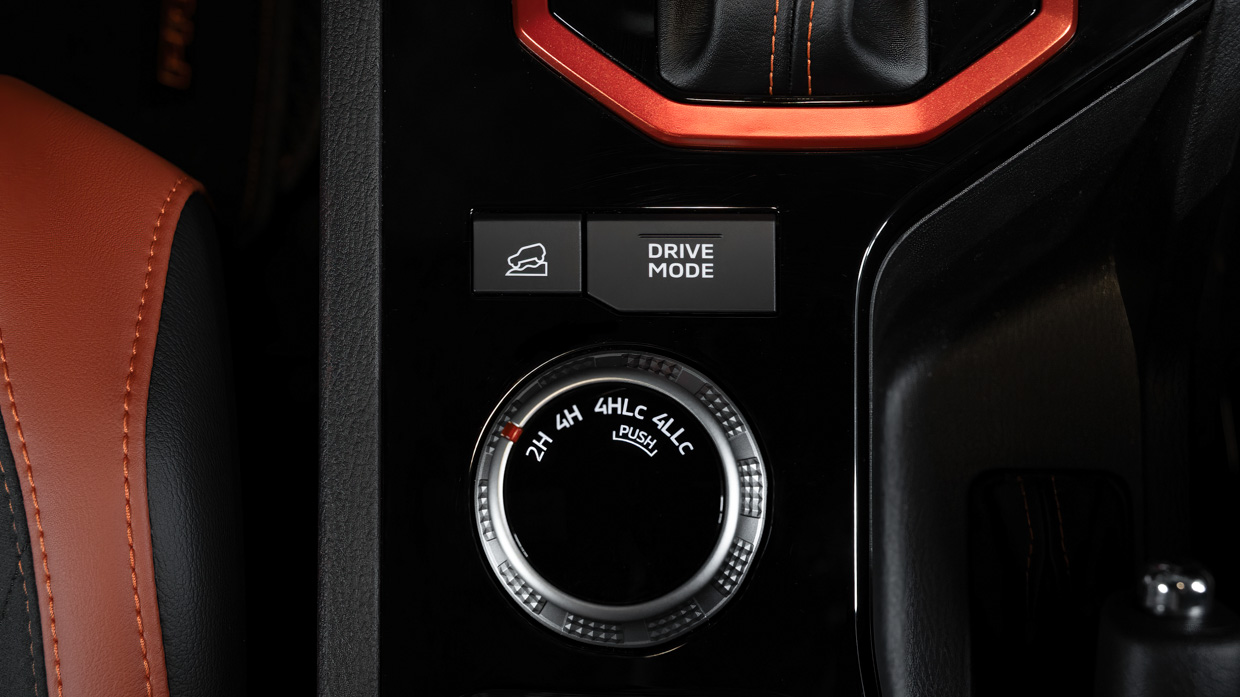

But all Navara specs (including as-yet unnamed lower-grade variants expected to be SL and ST grades) feature suspension tuning by Premcar to improve on the Triton’s disappointing damping and load control.
CEO and engineering director of Premcar, Bernie Quinn, said their aim was to tune the D27 Navara to suit customer’s needs – focusing on improved steering response, improved primary and secondary ride comfort, and improved handling with an increase in steering linearity, roll and pitch control, and ease of manoeuvrability.
“But the extra bit of sauce on top of that is we make sure it’s really enjoyable to drive,” said Quinn, stating that he wanted the Navara’s steering input and body movement to work in unison, rather than having the body lean first, creating a delay before there’s any meaningful steering response.
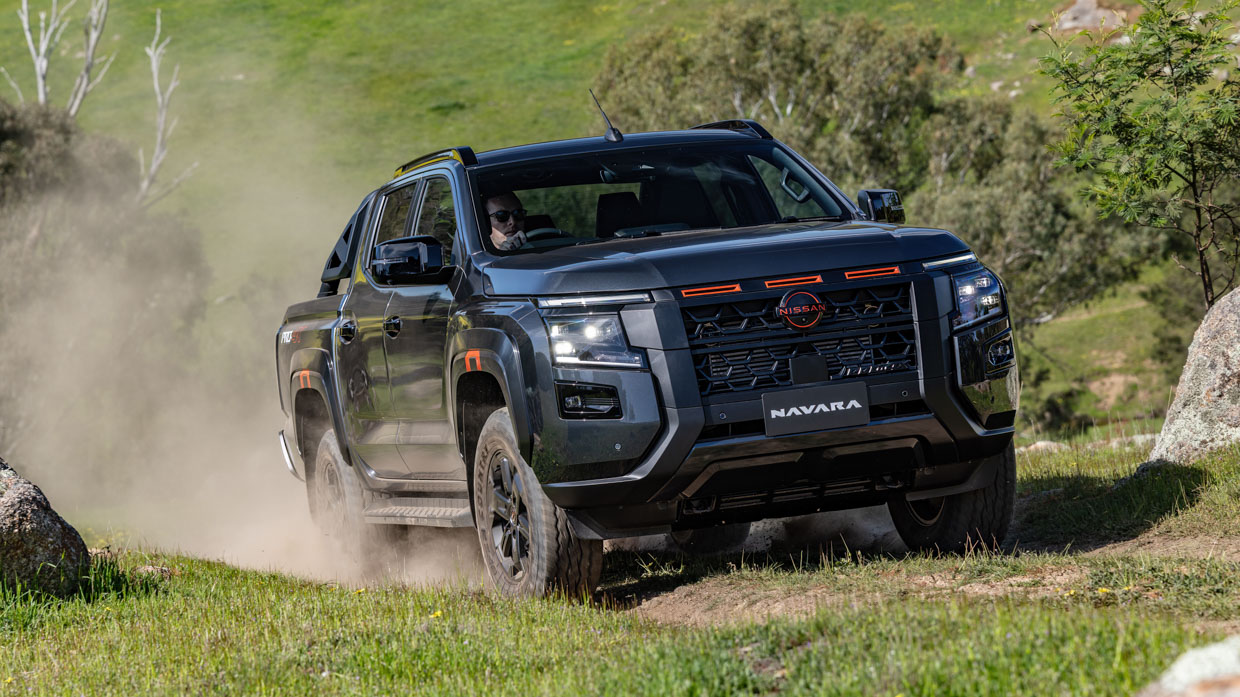
The only real change from the Triton is the dampers – larger Australian-made units with an internal rebound spring in the front pair for greater finesse in combining comfort with control. All springs remain the same, meaning coils up front and either three- or four-leaf rear springs (replacing the rear coil springs from the previous D23 Navara).
The result is three different suspension tunes for the D27, depending on the variant and wheel/tyre package (not including the bespoke, off-road-focused, totally redeveloped Premcar set-up for the forthcoming Pro-4X Warrior version).
We’re expecting one tune for the Pro-4X and ST-X, a second set-up for the aforementioned base variants featuring a simpler 4WD system (electronic rear LSD, no rear diff lock), and a third acting as a heavy-duty option – potentially replacing the previous D23 SL Warrior (a stripped-out ute with full Premcar suspension tune).
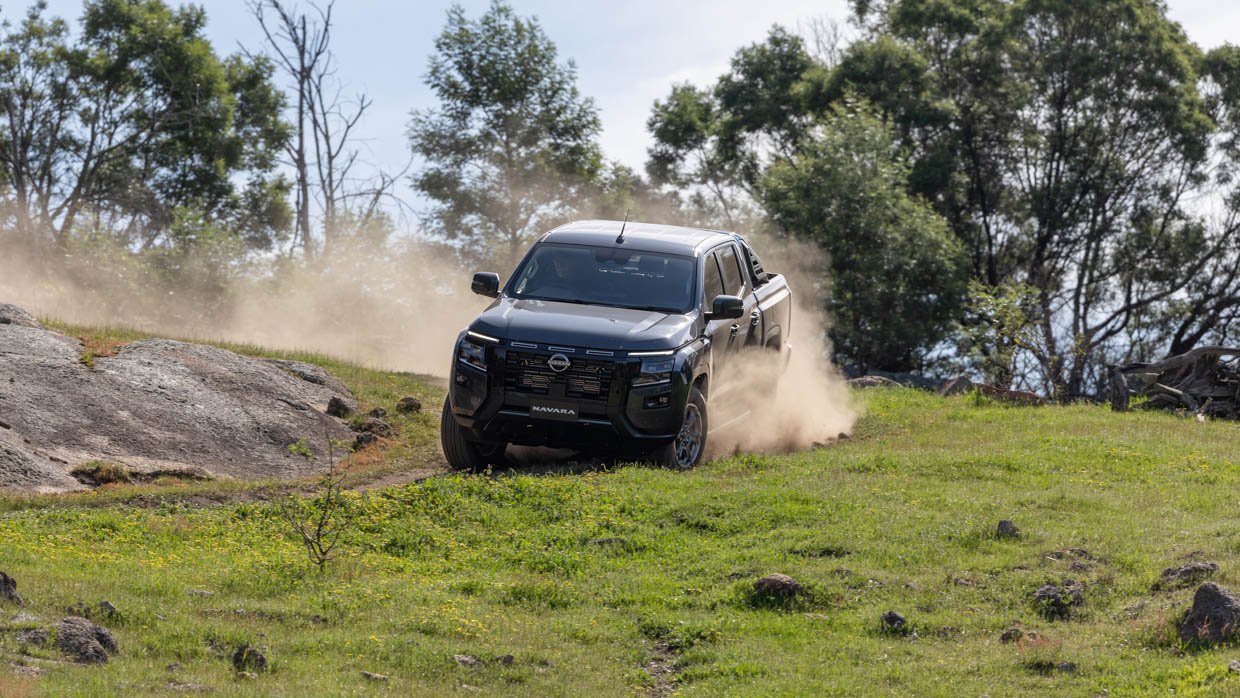
Given the many issues Nissan Australia had with the previous coil-sprung Navara in trying to find an acceptable tune for its suspension (at least until Premcar came along), the switch to simpler leaf springs is inconsequential. The resultant effect is negligible, even though the coils should’ve theoretically provided a smoother ride.
Instead, the old D23’s coils were tuned pretty stiff, in an attempt to achieve a decent payload and carrying capacity. So it may surprise some people that the new leaf-sprung Navara actually has 54-70kg less payload than before, though it rides with seemingly greater sophistication and now offers 228mm of ground clearance.
Our initial taste of this Nissan-specific suspension set-up was at an off-road facility outside of Adelaide, which offered lots of very bumpy uphill and downhill sections, as well as a handful of faster, rocky dirt surfaces.

The D27 immediately feels more controlled than a Triton, and more pleasant than the previous non-Warrior D23. The primary ride emphasis combines damping discipline with less wheel patter, thereby smoothing out the edges, while the secondary ride control means the new Navara can take big hits and without wilting into its bump-stops like a Triton.
On initial impression, so far so good.
Faster dirt surfaces reveal effortless response to steering turn-in and a consistency to the D27 Navara’s suspension control. It feels firm but not stiff – lacking the jitteriness and abrasiveness that crucifies the ride quality of so many dual-cab utes in the market in the name of boasting a 3500kg braked towing capacity.
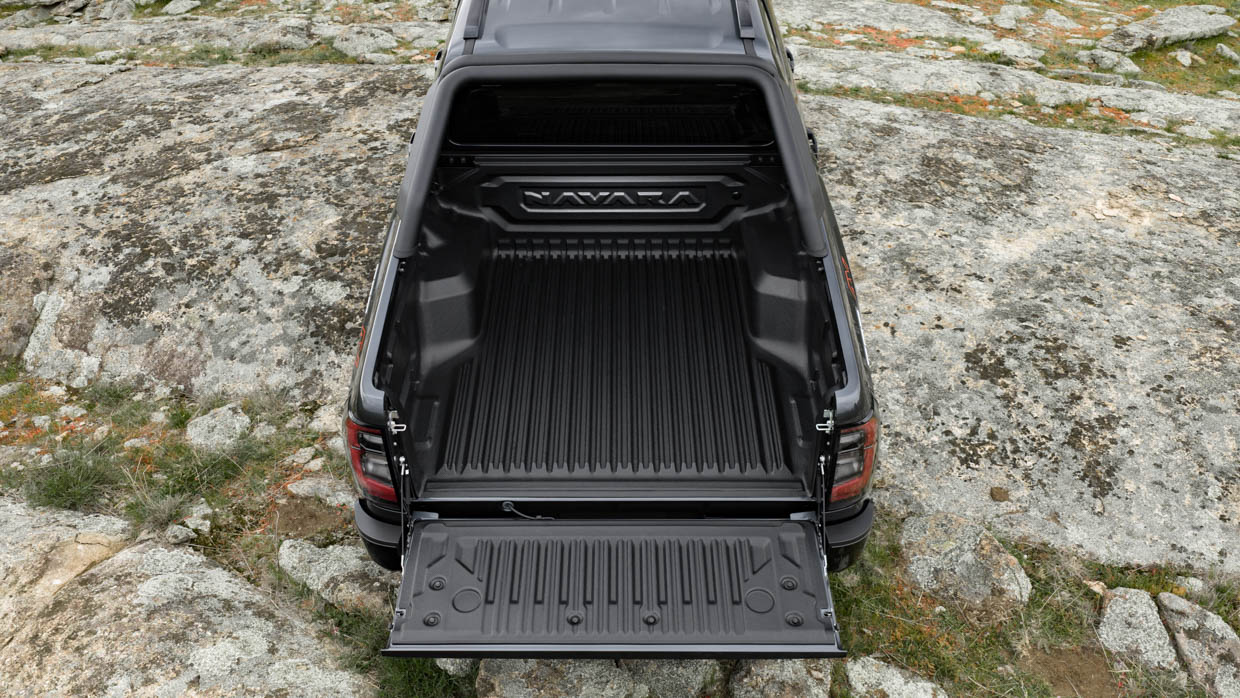

The new Navara does achieve that figure, but it doesn’t seem to sacrifice an acceptable level of comfort. What it does concede is a modest amount of payload, though the toughest version can still cop 1047kg (compared to 1117kg in the previous Navara).
Drivetrain-wise, it’s pure Triton (again), meaning a fairly robust 150kW/470Nm 2.4-litre twin-turbo diesel four-cylinder tied to a six-speed automatic. It feels torquier and stronger than the previous 140kW/450Nm 2.3-litre twin-turbo diesel (sourced from the Renault Master van), and is slightly more economical, but I’m not sure it’s quite as refined.
Given the urban/family/lifestyle usage of many of these dual-cab utes, we’re thrilled to hear that Premcar has aimed to make this new-gen D27 Navara “fun to drive” – three words that do not apply to the Mitsubishi Triton donor vehicle. And we’re expecting multiple different flavours, from steel-wheeled stripper to balls-out Warrior, looking potentially tougher than ever.

Sure, most of it is pure Triton, including the rather dull colour palette (apart from Yamabuki Orange metallic), but there’s enough difference here to present two quite distinctive ute options – at least as much as the Isuzu D-Max and Mazda BT-50 twins.
Only a proper full road test back on home turf will prove whether Premcar’s desire to make the D27 Navara a fun-to-drive ute – both on-road and off-road – has truly elevated it beyond the flawed Mitsubishi Triton donor ute, and the previous D23 Navara.
But like we said, early signs are highly promising.
About Chasing cars
Chasing Cars reviews are 100% independent.
Because we are powered by Budget Direct Insurance, we don’t receive advertising or sales revenue from car manufacturers.
We’re truly independent – giving you Australia’s best car reviews.
The estimate provided does not take into account your personal circumstances but is intended to give a general indication of the cost of insurance, in order to obtain a complete quote, please visit www.budgetdirect.com.au. Estimate includes 15%^ online discount.
^Conditions Apply
Budget Direct Insurance arranged by Auto & General Services Pty Ltd ACN 003 617 909(AGS) AFSL 241 411, for and on behalf of the insurer, Auto & General Insurance Company Limited(ABN 42 111 586 353, AFSL 285 571).Because we don’t know your financial needs, we can’t advise you if this insurance will suit you. You should consider your needs and the Product Disclosure Statement before making a decision to buy insurance. Terms and conditions apply.
Indicative quote based on assumptions including postcode , 40 year old male with no offences, licence suspensions or claims in the last 5 years, a NCD Rating 1 and no younger drivers listed. White car, driven up to 10,000kms a year, unfinanced, with no modifications, factory options and/or non-standard accessories, private use only and garaged at night.
^Online Discounts Terms & Conditions
1. Discounts apply to the premium paid for a new Budget Direct Gold Comprehensive Car Insurance, Third Party Property Only or Third Party Property, Fire & Theft Insurance policy initiated online on or after 29 March 2017. Discounts do not apply to optional Roadside Assistance.
2. Discounts do not apply to any renewal offer of insurance.
3. Discounts only apply to the insurance portion of the premium. Discounts are applied before government charges, taxes, levies and fees, including instalment processing fees (as applicable). The full extent of discounts may therefore be impacted.
4. We reserve the right to change the offer without notice.